TU Delft graduation project
Please magnify the picture by clicking on this icon. ↗
An old proverb from Piedmont, North-West Italy, states that there’s no home without a ‘crutin’. Crutins were traditional underground excavations, built to store and age wine for long periods. They could benefit from the exceptional isolating capacity of thick layers of soil. When built close to houses, they became a place to taste old wines in company, particularly during winter.
This project aims to rediscover the sustainability of epigeous constructions to make wine and apply it to a new concept of winery, one that might add to the social experiences of producing wine and, well above ground, tasting it. Winemakers and visitors are immersed into the winemaking process through variations in scale across all twelve steps of vinification, from grapes to bottles.
Taking advantage of the hilly nature of the region’s topography, the wine is allowed to flow down from one step to the next, eliminating mechanical pumping and enhancing the quality of wine. Natural upwards ventilation rids the space of CO2 from the fermentation.
Graduation project mentored by: Kas Ooserhuis, Henriette Bier, Nimish Biloria; technology mentor: Axel Kilian.
Wine production diagram
Rural situation of the area
Relevant sections to shape to function diagrams
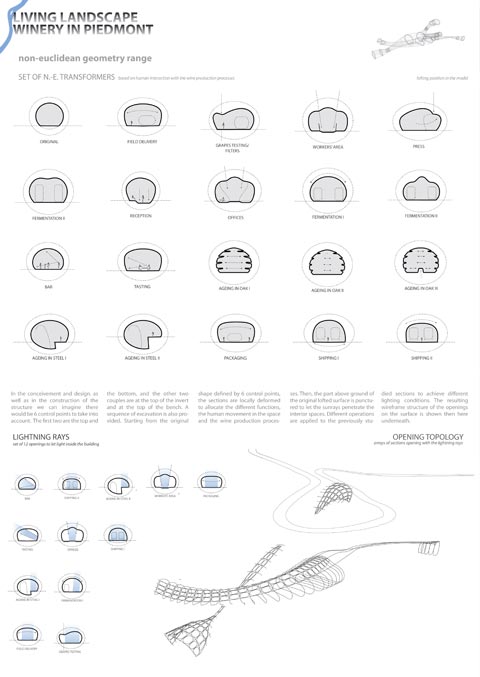
Sections
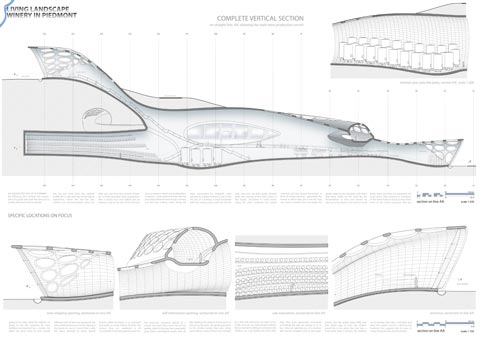
Plan
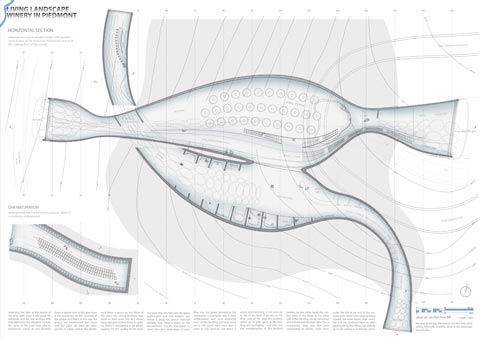
Processing interactive environment tool
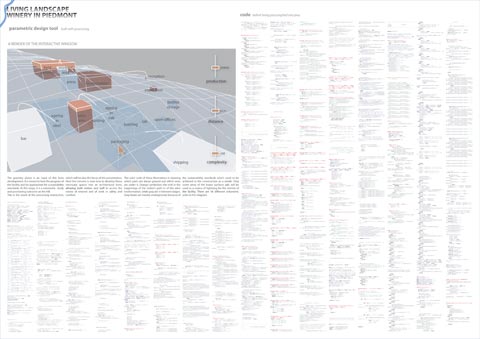
Technological sections
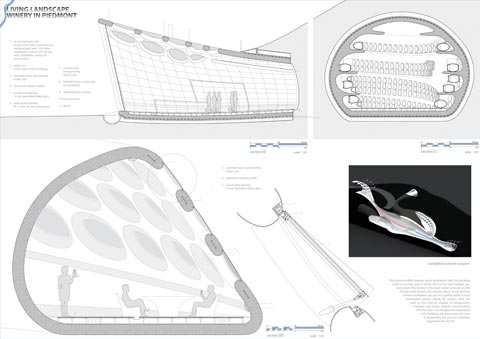
Blog post
You can read a blog post about today.

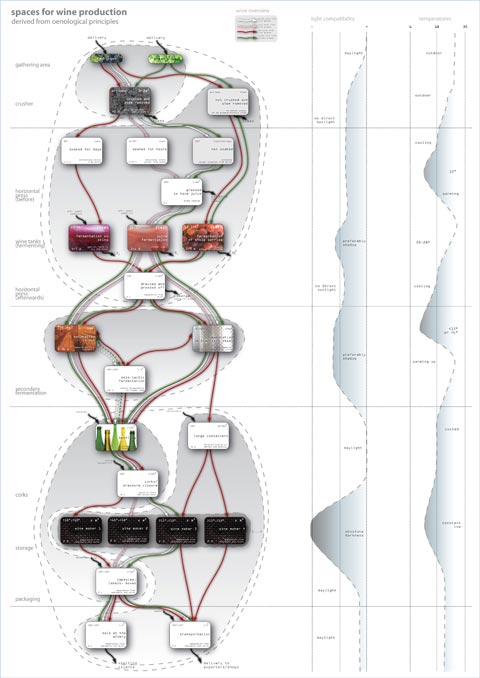
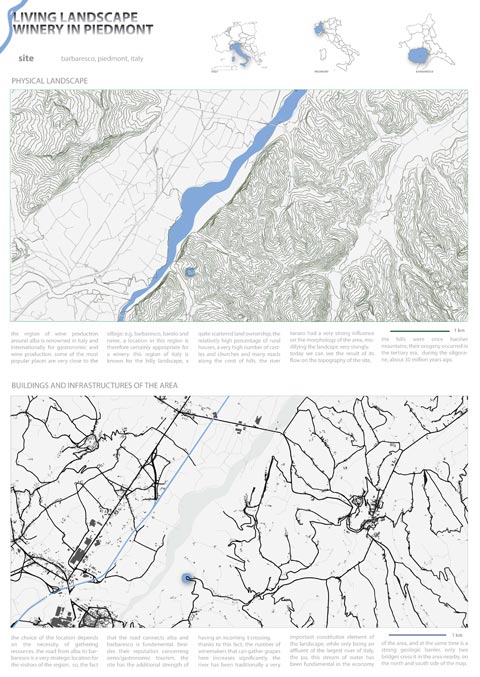
June 2nd, 2009 at 3:28 am
Hi, cool post. I have been wondering about this topic,so thanks for writing.
June 7th, 2009 at 11:27 am
Hi,
nice presentation!
could you tell me how you made your flash presentation ? is this a free web tool or did you do it in flash all by yourself ? thx
June 7th, 2009 at 11:38 am
It’s all made in flash, with a simple Actionscript v2 steering the “movement of pages”. The script allows the animation to continue for 10 frames, then stops to wait for input. Would be easier, maybe, to now load each page through a XML file. Let me know if you need more info.
January 6th, 2010 at 8:53 pm
What programs did you use to make this?
If rhino, how did you cut the sections?
January 7th, 2010 at 10:33 am
Hi JP,
yes, the program is Rhino and at that time I used simply the _Intersect command. Now I’d probably use the Grasshopper intersections, as they are a bit more parametric.
Please let me know if I can help with this.
September 17th, 2010 at 4:24 pm
Hi Giulio,
The Presentation was very impressive i like the way you proceeded in design. and defiantly grasshopper wold have done a great help to u for this design ..
September 25th, 2010 at 3:22 pm
Thank you!
– Giulio
February 28th, 2011 at 11:29 am
Hi Giulio. I never know your graduation project. I like it! Poethic and technological at the same time. Great. cesare